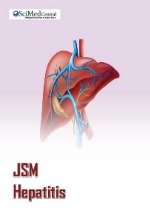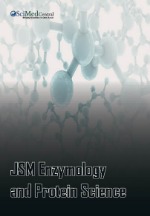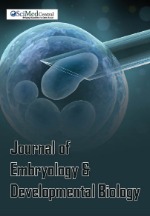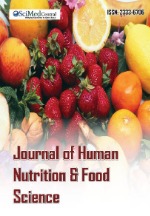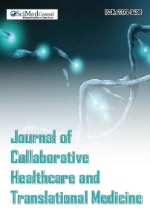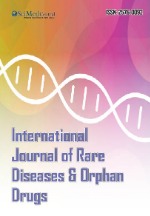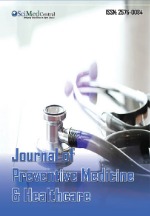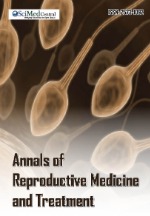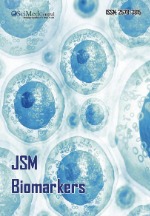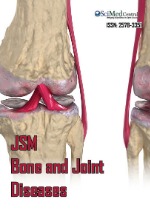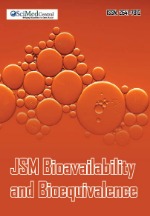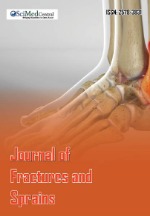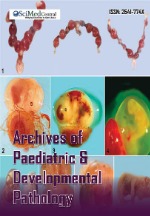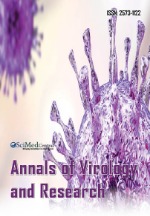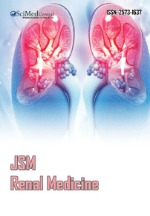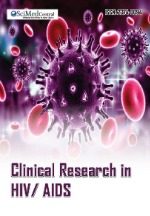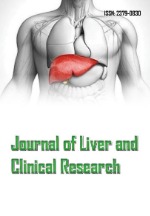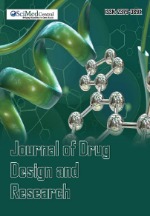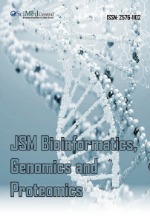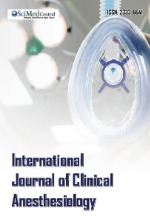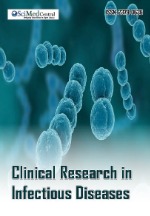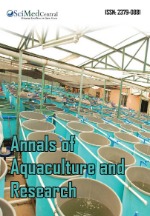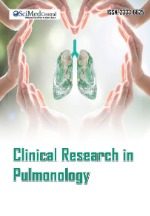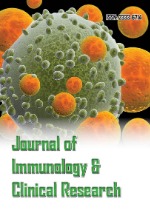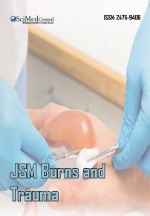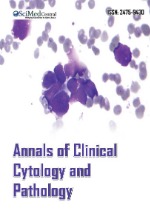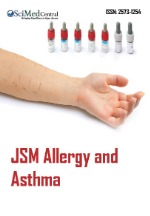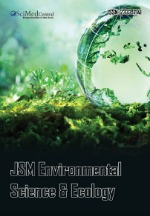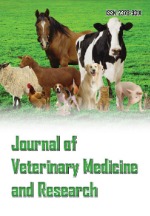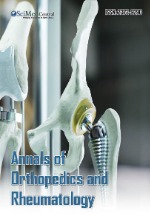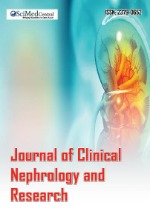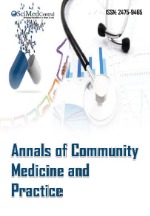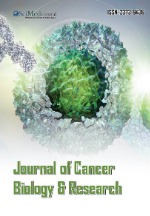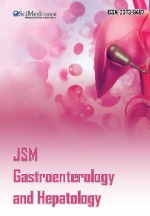Level of Moisture Contents, pH and Microorganisms as Determinant Factors for Contaminant in Raw and Fermented Food
- 1,3. Department of Environmental Health, Ekiti State College of Health Sciences and Technology, Ijero Ekiti
- 2. Department of Community Health, Ekiti State College of Health Sciences and Technology, Ijero Ekiti
- 4. Department of Basic Medical Sciences, Ekiti State College of Health Sciences and Technology, Ijero Ekiti
Abstract
Nigeria is a country that is endowed with many fermented foods and food condiments. Locust beans (Parkia biglobosa) (iru) and Fermented maize (Zea mays) (ogi) are typical fermented food products. However, fermented foods may pose a potential food safety risk due to continual presence of microorganisms and their toxins which maybe produced during the fermentation processes or added during the food processing stages. Hence, this study assesses pH, moisture contents and coliform counts of selected fermented foods (Ogi and Iru) as determinant factors for contaminants on both raw and fermented products. A cross sectional study was carried out on selected fermented Corn (ogi) and locust beans (iru) processors in Ibadan, Oyo state, Nigeria. A total of 100 questionnaires were randomly administered to assess the standard practices during the food processing. Laboratory analysis was conducted to assess the physical properties (pH and moisture content) of fermented maize and microbial loads (total coliform and total bacterial counts) of locust beans (raw and finished products). Data were summarised using simple percentage and line graph. The mean age of the respondent was 37.9 ± 7.3 ranging from 22 to 56 years, on average 89% of the respondents agrees their machines are properly washed before grinding while only 32% make use of a personal grinding machine. The pH of the fermented maize was reduced compared to the slightly acidic raw materials. Moisture contents of finished products however, increased compared to the raw materials. Total bacterial count and total coliform count significantly increased in some samples of fermented locust beans. Raw materials and fermented products of maize and locus beans showed substantial contaminants before and after fermentation. Therefore, contamination should be avoided by following strict hygienic processes for local fermented foods.
KEYWORDS
- Fermented maize
- locust beans
- Microbial counts
- Moisture contents
CITATION
Dada AO, Olusuyi AM, Odeyemi TS, and Bello KA. (2025) Level of Moisture Contents, pH and Microorganisms as Determinant Factors for Contaminant in Raw and Fermented Food. Ann Food Process Preserv 8(1): 1039.
INTRODUCTION
Fermented foods are one of the major food groups in Africa. The process of fermentation involves the breakdown of organic compounds into acids or alcohol through enzymatic action of microorganisms particularly yeasts and bacteria under anaerobic conditions [1]. Fermentation has been found to enhance the nutritional, health promoting, organoleptic and preservative properties of food [2]. Fermentation plays a significant role in developing economies as a technology that increases income sources, food availability, food diversity and reduces post-harvest losses. In Africa, fermented foods are mostly produced traditionally which brings about variation in the substrate used, processing conditions, packaging materials, handling and storage practices [3,4].
During food processing, food contamination is preventable. This statement has been the focus for discussion among scholars because it is believed that contamination will occur due to the number of persons involved in the processing and supply chain, as well as the fact that pathogens are everywhere and can be introduced into foods no matter how many precautions are taken. Some studies in Africa on some fermented products have demonstrated that, depending on the process and the hygienic conditions observed during preparation, some fermented foods. For example, togwa, a fermented cereal prepared in Tanzania, may pose a safety risk [4,5].
Since the inception of human advancement, there has been a close association between man, his sustenance and fermentative enterprise of microorganisms, which has been used in the manufacture of fermented beverages and foods [2]. Fermented locust beans (iru) is an examples of vegetable proteins that is used as meat substitutes in diets and processed with methods of wild solid-state fermentation, which gives rise to extensive hydrolysis of its carbohydrate and protein constituents [3]. In addition to their protein content, they are rich in fat, carbohydrates and are good sources of vitamins and minerals. Their typical processing method involves dehulling, boiling, draining, fermentation, salting, drying (optional) and packaging. Maize grains are converted to ogi by steeping in water (±3 days), washing, wet milling and sieving. The products are the resultant sediments from this process. Ogi are products of lactic acid fermentation used mostly for infant feeding and often supplemented with proteinaceous foods because of their high carbohydrate content [6].
The microbial quality of these foods is influenced by intrinsic and environmental factors such as hygiene during processing, composition of substrates etc. The maize grains and locust bean into ogi and iru, respectively is predominantly by Bacillus species [5,7]. Other bacteria species that can be isolated during the fermentation process are Staphylococcus, Escherichia, Micrococcus, Leuconostoc, Pseudomonas and Corynebacterium [3]. However, fungal species have not been associated with the fermentation of ugba, iru and ogiri. Lactobacillus species such as L. plantarum and yeasts have been reported to be the fermenting organisms for ogi production [8]. Irrespective of the benefits derived from fermented foods, there are concerns about their safety because of the continuous and unpredictable pre- and post-processing contamination by pathogenic microorganisms some of which can be toxigenic fungi that produce harmful secondary metabolites including mycotoxins.
Some fungal species belonging to the Penicillium, Mucor, Geotrichum, and Rhizopus genera have been used in the fermentation of cheese and milks, while others produce undesirable toxins and their presence in food has been attributed to their sporulating ability, which makes them easily contaminate the environment [9] and the food products therein. Hence, the assumption among consumers that fermented foods - especially those processed traditionally - are safe is a dangerous one as such foods could be potential sources of mycotoxin exposure and accompanied health complications. There has also been evidence of multiple mycotoxins in different food categories including fermented foods [10].
Nevertheless, most microbiological studies on African fermented foods have been based on the isolation and characterisation of microorganisms that enhance the fermentation processes and only studies with limited scope have been conducted to establish the incidence of pathogenic organisms like fungi [11,12]. Even though some studies have reported the presence of fungi in some fermented foods consumed in Nigeria, there is little adequate information on the spectrum of microorganisms associated with these foods since most of these organisms were identified to genus level and only a few to species level. It is worthy to note that the safety of fermented food is largely influenced by some quality parameters such as moisture content, pH and microbial level and these needs to be considered during safety studies. This research was therefore aimed at assessing the level of pH, moisture and coliform counts in both raw and fermented locust beans and maize in order to gain insight into their safety.
METHODS
Self-reports with the use of questionnaire and laboratory analysis (microbiological analysis, pH and moisture content) were adopted for this study
Questionnaires administration
Information from the local ogi (Zea mays) and iru (Parkia biglobosa) producers were obtained. Observations were documented on the raw materials used, the equipment and utensils, fermentation processes to identify sources of potential contaminants. Fifty of each Households and sites local processor of fermented food were randomly selected for this study.
Sample collection
Samples of both selected raw materials (Maize and Locus beans) and processed ogi and iru were collected from randomly selected ten processors out of one hundred participants making 10% of study population for each selected local fermented foods using sample bag and hand gloves. The samples were taken to the laboratory same day of collection for microbiological (total coliform and total viable counts), pH and moisture content analysis.
Microbial examination of samples
Microbial examination was carried out following procedures set by Yakubu et al. (2022). 10 g of samples were collected and subjected to a serial dilution of up to 4th dilution. 1 ml aliquot from the 4th dilution was dispensed into petri dishes that were pre-labeled. 15 ml of nutrient agar and EMB agar were separately dispensed into the petri-dishes and shaken properly to mix and spread the aliquot well in the medium. Inoculated plates were incubated at 370C and 420C for Nutrient agar plates and EMB plates respectively for 24 hours. Aseptic conditioned was ensured all through the stages of analysis and sterile water and bottles were used throughout.
Total bacteria count was enumerated from the nutrient agar plates while total coliform appearing as lactose fermenting yellow colonies, purple with dark center or green metallic sheen was enumerated from the EMB plates. The CFU/mL was calculated and recorded for each sample.
CFU/mL=Colonies per plate x dilution factor x 1/aliquot
Determination of moisture contents
Moisture content of the samples taken was determined on samples collected at 24-hr interval using method described by WHO [1]. 2g of each of the sample was weighed into a previously weighed crucible. The crucibles plus sample taken was then transferred into the oven at 1000C to dry to a constant weigh for 24 hours overnight. At the end of the 24 hours, the crucible plus sample was removed from oven and transferred to desicator cooled for ten minutes and weighed.
Statistical analysis
The data were presented and analysed using frequency distribution table 1, simple percentage and mean and ling graph.
Table 1: Information on food fermentation process.
|
S/N |
Process |
Maize |
Locust beans |
Total |
|
1 |
Days for whole fermentation process |
|
|
|
|
|
2 days |
18% |
0 |
9% |
|
|
3 days |
68% |
66% |
67% |
|
|
4 days |
32% |
14% |
23% |
|
2 |
Grinding of food products |
|
|
|
|
|
Public grinding machine |
74% |
62% |
68% |
|
|
Private grinding machine |
38% |
26% |
32% |
|
3 |
Ensure machine properly washed before grinding |
98% |
80% |
89% |
|
4 |
Frequency of changing water during fermentation |
|
|
|
|
|
Not at all |
62% |
8% |
35% |
|
|
Every 12 hours |
68% |
18% |
43% |
|
|
Every 24 hours |
20% |
16% |
18% |
|
|
Every 2 days |
4% |
2% |
3% |
|
|
Other |
0 |
2% |
1% |
|
5 |
Water used during fermentation |
|
|
|
|
|
Boiled |
70% |
85% |
78% |
|
S/N |
Process |
Maize |
Locust beans |
Total |
|
|
Cold |
30% |
14% |
22% |
RESULT AND DISCUSSION
Food processing
The result of this study showed that majority (68%) patronized public places to grind their grains, and good proportion (89%) would ensure that these grinding machines used were properly washed before grinding would commence. This implies that processors were seriously concerned about the safety and quality of their processed foods. More proportion (67%) of the processors would allow fermentation to take place for three days, while majority (35%) would not change the processing water throughout the fermentation process. This would provide adequate room for bacterial growth and proliferation on the fermenting grains, except for 78% who would use boiled water as a replacement during this process.
Physical and microbial characteristics of the fermented foods
This study revealed that pH contents of the fermented foods (ogi and iru) reduced after the fermentation processes, while the moisture contents increased. The increase in moisture contents of both selected fermented foods (Iru and Ogi) may be probably due to boiling and subsequently soaking in water. It may also be as a result of fermentation processes. Since high moisture foods do not keep long in storage at room temperature, both local selected fermented foods will be prone to deteriorating agents such as mould when kept at room temperature.
Both the total bacteria count and total Coliform on the raw and fermented maize products reduced after fermentation. This reduction might be due to long stepping in water especially when boiled water is being used. However, total bacteria and coliform counts on locust beans products were higher in some of the selected products than their raw materials this might be because of the processing that entails much work of exposing beans seeds to open air and dehulling of the seeds with feet and due to unhygienic conditions of producing the food. Further analysis revealed significant reduction in the counts of total bacteria (p = 0.001) and total coliform (p = 0.001) on the fermented maize products, but there was no significant difference in the pH (p = 0.445) and moisture content (p = 0.324). Only total bacteria count on the fermented locust beans gave a significant difference (p = 0.006) when compared with the count on the raw materials. Presence of total coliform on the fermented food products indicated cross contamination from handling practices (Figures 1-4).
Figure 1: pH result for raw maize and finished products (ogi).
Figure 2: Moisture content of raw maize and finished products (ogi).
Figure 3 Total bacteria count (104 cfu/ml) on raw locust beans and finished products (Iru).
Figure 4: Total coliform (104 cfu/ml) on raw locust beans and finished products (Iru).
DISCUSSION
Globally, food safety remains a major issue. According to the World Health Organization [1], 1 in every 10 people becomes ill, and more than 120,000 children under the age of 5 die each year as a result of consuming contaminated food. Africa bears a disproportionate share of the global burden of foodborne illness, with an estimated annual morbidity of 90 million people. Foodborne pathogens and their toxins are primary aetiological agents of foodborne disease (FBD) and a growing public health concern. Fermented foods are generally thought to be safe. Fermenting organisms, particularly Bacillus spp., produce antimicrobial compounds such as organic acids, ethanol, bacteriocins, and hydrogen peroxide that inhibit the growth and survival of foodborne pathogens. The alkaline pH medium observed at the end of the fermentation process in this study could be linked to the presence of which was reported by Cichouska and Ziarno [13] that Bacillus spp predominate the fermentation of African locust bean to produce iru and it favors their growth and multiplication. Previous studies has shown that Bacillus spp, Pediococcus spp, Streptococcus spp and Lactobacillus spp were isolated and identified from iru samples collected from different regional markets in Nigeria [5,7,8]. Bacillus cereus strains isolated from fermented locust bean, iru, exerted inhibitory activity against Escherichia coli and Staphylococcus aureus, were acid tolerant, more tolerant to bile salt, hence, can serve as a potent probiotic and iru may be a possible probiotic food [14,15]. Furthermore, the degradation of proteins by Bacillus spp., most notably B. subtilis, B. pumilus, and B. licheniformis, results in the accumulation of peptides and ammonia this may causes an increase in moisture level and pH as observed in this study. The presence of pathogenic and spoilage organism E. coli during Prosopis africana fermentation for okpeye production was reported by Gberikon et. al., [16] and Fowoyo et al., [8] made similar observations, noting the presence of Enterobacter cloacae and Micrococcus spp. in okpeye. This could also be an indication of faecal contamination as a result of product mishandling during production.
However, indigenous food production practises are frequently based on spontaneous fermentation, such as chance inoculation or the use of backslopping, in which utensils from a previous fermentation are reused [17,18]. Farmers, food producers, and handlers’ lack of knowledge and application of Hazard Analysis and Critical Control Points (HACCP) and good manufacturing practices (GMP) can result in unsanitary production and processing.
CONCLUSION
The study revealed that raw materials, maize and locus beans seeds, usually come with a substantial contaminants most of which drastically reduced during the prolonged steeping in hot water and boiling to soften the seeds as obtainable in related fermentations. Conditions that contribute to the safety of fermented food are related to many fermentation activities of microorganisms that occur in acidic medium, which facilitates an environment that is unsuitable for pathogenic and spoilage organisms. More also steeping and cooking processes especially boiling for long hours, decreases microbial populations.
However, it should be noted that fermentation itself does not address the underlying problems of contaminated raw materials, dirty environment, uncontrolled fermentation process, post process contamination, poor personal hygiene, and any of these factors or more can render fermented foods unsafe. Like the case of some locust beans (iru) samples that contain total bacteria and coliform counts which was higher in the products than their raw materials which could cause food poisoning especially to the infant. Therefore, contamination should be avoided by following strictly HACCP model for local fermented foods.
Author’s Contribution
Dada A.O designed the research topic and methods, Olusuyi M.O wrote the background of the study whereas Odeyemi T.S and Bello K. wrote the results and Discussion/ conclusion, respectively.
REFERENCES
- World Health Organization. WHO Estimates of the Global Burden of Foodborne Diseases: Foodborne Disease Burden Epidemiology Reference Group 2007-2015. 2015; 1: 265
- Chilton S, Burton J, Reid G. Inclusion of Fermented Foods in Food Guides around the World. Nutrients. 2015; 7: 390-404.
- Akpi UK, Nnamchi CI, Ugwuanyi JO. Development of Starter Culture for the Production of African Condiments and Seasoning Agents. Advances in Microbiology. 2020; 10: 599-622.
- Ezeocha CV, Ugwuja JL, Onyeabor CS.Evaluation of Indigenous Okpeye (Prosopis africana) Processing Conditions in Nsukka LGA, Enugu, Nigeria and Its Effect on the Quality of the Fermented Seasoning. Nigeria Agricultural Journal. 2022; 53: 191-199.
- Ariyo OC. Economic analyses of traditional processing of African locust beans (Parkiabiglobosa, Jacq. Benth) seeds in Kaduna metropolis, Kaduna state, Nigeria. Ethiopian Journal of Environmental Studies and Management. 2023; 16: 415-426.
- Sims I M, Tannock GW. Galacto-and Fructo-oligosaccharides utilized for growth by co-cultures of Bifidobacterial species characteristic of the infant gut. Appl Env Microbiol. 2020; 86: 214-20.
- Yakubu CM, Sharma R, Sharma S, Singh B.Influence of alkaline fermentation time on in vitro nutrient digestibility, bio- and techno- functionality, secondary protein structure and macromolecular morphology of locust bean (Parkiabiglobosa) flour. 2022; 161: 113295
- Fowoyo PT. Microbiological and Proximate Analysis of Okpeye, a Locally Fermented Condiment. Food Nutrition Journal. 2017; 10: 2575-7091.
- Gowrishankar S, Kamaladevi A, Pandian SK. Prebiotics mechanisms of action: An overview. In: Advances in Probiotics Microorganisms in Food and Health. Chapter 9. 2021; 1: 137-148.
- Mazziota C, Tognon M, Martini F, Torreggiani E, Rotondo JC. Probiotics mechanism of action on immune cells and beneficial effects on human health. Cells. 2023; 12: 184.
- Vijayasarathy M, Prabhu YA, Pavithra S, Prabha SJ, Rao TJM. Immune response of Fructo and Galacto-oligosaccharides. In: Prebiotics and Probiotics in Disease Regulation and Management. 2022; 10: 27-59.
- Mei Z, Yuan J, Li Dandan. Biological activity of galacto-oligosaccharides: A review. Frontiers in Microbiology. 2022; 13: 9930-52.
- Cichouska P, Ziarno M. Legumes and legume-based beverages fermented with lactic acid bacteria as a potential carrier of probiotics and prebiotics. Microorganisms. 2022; 10: 91.
- Zyl WF, Deane SM. Dicks LMT. Molecular insights into probiotic mechanisms of action employed against intestinal pathogenic bacteria. Gut Microbes. 2020; 12: 18313-39
- Ambrogi V, Bottacini F, Cao L, Kuiper SB, Schoterman M, Sinderen D. Galacto-oligosaccharides as infant prebiotics: production, application, bioactive activities and future perspectives. Crit Rev Food Sci Nutr. 2021; 63: 753-766.
- Gberikon GM, Agbulu CO, Yaji ME. Nutritional Composition of Fermented Powdered Prosopis africana Soup Condiment with and without Inocula. International Journal of Current Microbiology and Applied Sciences. 2015; 4: 166-171.
- Nwokeleme CO, Ugwuanyi JO. Evolution of Volatile Flavour Compounds during Fermentation of African Oil Bean (Pentaclethra macrophylla Benth) Seeds for “Ugba” Production. International Journal of Food Science. 2015; 2015: 1-8.
- Ugwuanyi JO. Microbial Technology and Food Security: Microorganisms Put Safe Food on Our Tables. 106th Inaugural Lecture of the University of Nigeria, Nsukka, 14 April 2016. 2016; 13: 1-74.


















